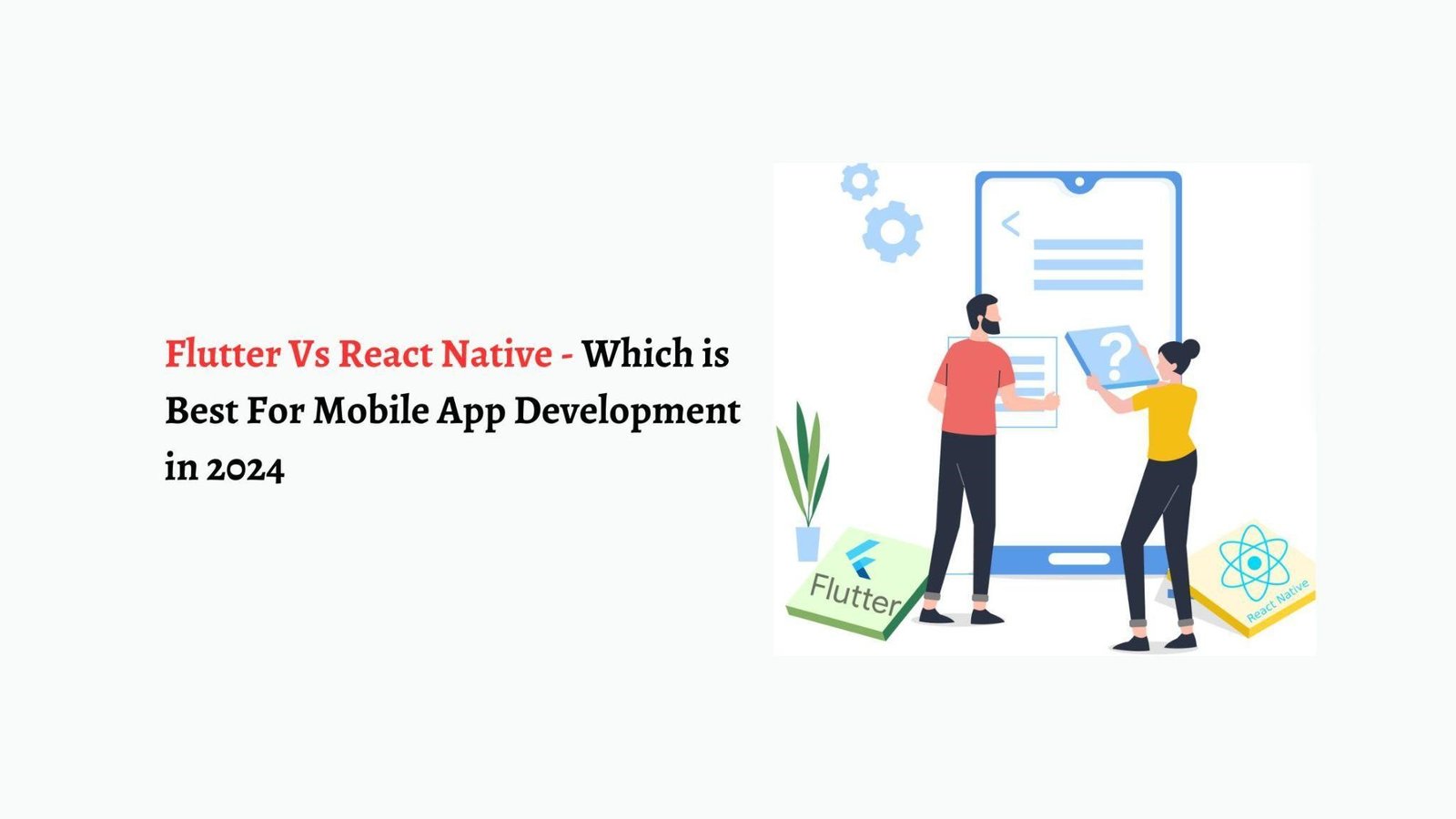The universe of mobile app development has been seeing continuous advancement, with new frameworks and innovations arising to fulfill the growing demand of businesses to build a robust app. Two leading players in the cross-platform development landscape are Flutter and React Native. As we step into 2024, developers of the Flutter app development company and React App development company are confronted with the critical choice of picking the right framework for their app project. In this blog, we will discuss an overview of both frameworks and which one should you choose for your custom mobile app development project.
An Overview of Flutter and React Native
Created by Google, Flutter has built up forward movement as of late. Known for its expressive UI and hot-reload feature, Flutter utilizes the Dart programming language. It permits designers to make natively incorporated applications for mobile, web, and desktop from a single codebase.
On the other hand, developed by Facebook, React Native has been a trailblazer in cross-platform development. It utilizes JavaScript and React to build native-like applications. React Native has a huge and dynamic native community, making it a well-known framework utilized for performance and adaptability.
Flutter vs React Native: Key Differentiating Factors
-
Performance
Flutter’s exhibition is commendable because it utilizes an ordered programming language (Dart). The system gathers the code straightforwardly to native ARM code, disposing of the requirement for a scaffold to speak with the native modules. This results in enhanced performance and reduced application startup times.
While React Native’s presentation has worked on throughout the long term, it depends on a JavaScript scaffold to speak with native modules. This scaffold can present a slight above, influencing execution contrasted with Flutter. Nonetheless, enhancements and upgrades in React Native keep on tending to these worries.
-
Community and Ecosystem
Flutter’s community group has been developing consistently, and it benefits from Google’s sponsorship, guaranteeing nonstop help and updates. The bundle biological system, however not quite as broad as React Native’s, is growing, with one contributing bundle to the Flutter people group.
React Native flaunts an immense and mature community, making it a go-to decision for the developers offering React Native app development services. Its broad ecosystem of libraries and third-party bundles gives many functionalities that can be effectively coordinated into projects. The people group support also implies a fast issue resolution and an abundance of assets for developers.
-
UI Components and Customization
Flutter’s device-based architecture considers exceptionally adaptable and expressive UIs. The structure accompanies a rich arrangement of pre-planned gadgets, and one can make their custom gadgets for an interesting look and feel. The hot-reload feature upgrades the improvement interaction, empowering one to see continuous changes.
React Native follows a component-based structure that utilizes native elements. While it offers a wide cluster of pre-constructed parts, the customization may be restricted as compared to Flutter. The UI can be styled utilizing Flexbox and CSS-like templates, making it natural for web designers.
-
Development Time and Cost
Flutter’s hot-reload feature essentially lessens improvement time by permitting one to right away see changes. The single codebase for numerous stages likewise adds to quicker advancement. Nonetheless, the accessibility of Flutter designers could affect the general venture cost.
React Native’s “compose once, run anyplace” reasoning helps in decreasing improvement time and expenses. The broad utilization of JavaScript, a well-known language, guarantees a bigger pool of accessible designers, possibly making it more practical.
-
Integration and Native Modules
Flutter gives integration capabilities, and one can undoubtedly interface with native modules utilizing stage channels. While the structure upholds numerous native elements, periodic deferrals might happen when new native modules are delivered, as the need might arise to trust that Ripple will give the fundamental ties.
React Native succeeds in coordinating with native modules, on account of its JavaScript span. This permits one to consistently get to native features. The tremendous native area and environment guarantee a fast reception of new native modules, giving a convenient reaction to arising innovations.
-
Popularity and Industry Adoption
Flutter’s prominence has been consistently rising, and it has earned respect for its wonderful UI and execution. Google Promotions, Alibaba, and Reflectly are some striking applications that worked with Flutter. However, it may still be considered a second option compared to React Native in terms of industry adoption.
React Native has been broadly taken on by industry monsters, including Facebook, Instagram, and Airbnb. Its demonstrated history, combined with consistent updates and upgrades, makes it a strategic choice for enormous scope and high-traffic applications.
Conclusion
Picking either Flutter or React Native in 2024 eventually relies upon the particular prerequisites of the app project and the features you wish to integrate. Both frameworks have their set of capabilities and can be utilized well when you hire a professional Flutter app development company or React Native app development company to handle the development part. Consult an expert company, discuss your requirements, and they will propose the best-suited framework for your business.
